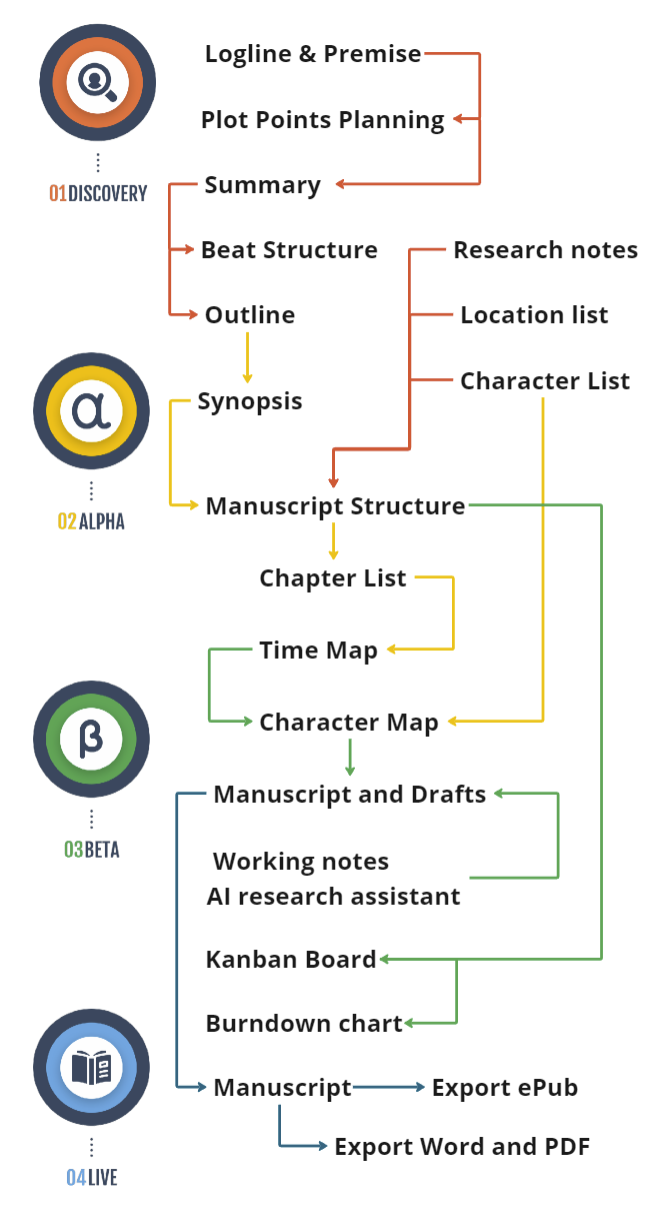Writers flinch at the word product. It feels sterile — something built by engineers, optimized by algorithms, far removed from the pulse of imagination — not something you’d hear whispered in a café, where you’re lost in your story’s heartbeat.
But here’s a secret every successful writer eventually discovers: your novel is a product. Not because it’s something to sell — but because it’s something to build.
A product is something made to last. It’s an idea given form — shaped, refined, tested, improved — until it becomes real enough to touch someone else’s life.
And that’s exactly what a novel is.
The Myth of the Muse
There’s a reason so many unfinished manuscripts live on hard drives. Writers often start with inspiration and end with exhaustion. We get lost somewhere between what we feel and what we planned.
And that’s where structure saves us. Just like a startup founder uses frameworks, roadmaps, and feedback loops to bring ideas to life, a writer can use the same principles to finish a book — without losing creativity.
Think about it:
- Your premise is your vision statement.
- Your outline is your roadmap.
- Each scene is a sprint.
- And your draft? It’s your prototype. Imperfect, evolving, and full of potential.
You don’t need to replace emotion with spreadsheets. You just need a system that keeps your story moving forward — a place where creativity meets accountability.
That’s what Asengana was built for.
Building Your Story Like a Product
When you treat your story as a living, evolving product, three things happen:
- You focus on outcomes, not output. You stop measuring progress by word count alone and start tracking what really matters — tension, emotion, transformation. Asengana’s analytics and outline views make this visible.
- You learn to iterate instead of restart. Founders don’t throw away their startup every time an idea shifts — they pivot. Writers can do the same by versioning chapters, adjusting structure, or reworking arcs without losing the big picture.
- You close the feedback loop. Test your story on readers — because, let’s be honest, asking ChatGPT or Claude for feedback might always get you positive feedback, not necessarily useful feedback. Rework based on real reactions, and evolve your manuscript like a product update. Every “release” — every draft — gets you closer to the version your readers will love.
Structure Is Not the Enemy of Creativity
There’s a quiet lie we tell ourselves: that systems kill inspiration. But if you look closely, all great artists have a method — something repeatable, personal, efficient.
Creativity isn’t a lightning strike; it’s a circuit. It needs structure to flow.
When you start seeing your writing life as a series of connected systems — inspiration, planning, drafting, editing, publishing — you realize structure doesn’t restrict art; it sustains it. And in an era of AI-generated text, what separates writers from machines isn’t speed — it’s coherence. Structure is your superpower.
Your Next Step
So here’s your first experiment:
- Write your premise like a vision statement.
- Sketch your plot like a roadmap.
- Treat every chapter as a prototype.
- Review your analytics like a founder in progress.
The goal isn’t to make writing mechanical — it’s to make it manageable.
The muse still matters. But she works better with a project plan.
AI can mimic language. You create meaning. And Asengana gives that meaning a form that lasts.
Ready to plan your next story like a startup?
Log in to Asengana and create your story roadmap today.




